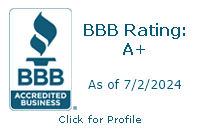Everything from the weather to UV radiation, debris, water, and vermin can harm the roofs of buildings over time, leading to expensive repairs and, at times, full commercial roofing replacement. To avoid issues that can become worse over time, there are various steps that managers or owners of commercial properties can take to guarantee their roofs are properly maintained.
Regular Roof Inspections
Early detection and repair of commercial roof issues before they worsen is one of the most effective ways to avoid roof problems. You can see wear and tear indicators like cracks, blisters, leaks, missing shingles, and loose flashing by having your building’s roof inspected regularly. You should have an inspection done at least once per year or more, ideally in the spring and fall, as well as following any significant storm or incident that might have damaged your roof. A regular inspection can lead to a small commercial roofing repair which may prevent bigger repair or replacement costs down the road.
Prompt Repairs
During an inspection, if you find any problems with your roof, you should fix them right away. Making a prompt commercial roofing repair prevents little issues from worsening fast, resulting in additional damage to both your roof and the supporting framework. For instance, a tiny leak can result in electrical hazards decay, or the formation of mold. As a result, you should get in touch with reliable commercial roofing contractors right away and let them handle the issue promptly and expertly.
Clearing Debris
Keeping your roof clean and free of any debris is another simple yet efficient technique to maintain it. Trash and leaves can block your gutters or downspouts, preventing water from draining correctly and perhaps causing flooding or pooling on your roof. Gutter guards or screens can be installed to keep debris out of your drainage system.
UV Protection and Coatings
The sun’s UV rays can cause the materials on your roof to fade, break, or warp, particularly if the components are metal, wood, or asphalt. UV rays can also raise the temperature of your roof, which may impact its comfort and energy efficiency. You can, depending on the material of the roof, apply reflective paint or protective coating to prevent UV damage. These substances can reflect or block UV rays, keeping your roof cooler and extending its life.
Preventing Water Build Up
Another threat to a commercial roofing system is water. Water leaks, mold growth, rust, or corrosion can occur from water seeping into your roof through gaps, holes, or cracks. Water on your roof may also expand and contract the materials making up your roof, causing cracks or breaks. Make sure your roof has a suitable slope and drainage mechanism that allows water to flow off your roof quickly and easily to avoid water buildup on your roof.
Proper Ventilation
An essential component of commercial roof maintenance is ventilation. Your roof’s health and lifespan may be impacted by the moisture and temperature levels controlled in your attic and roof through ventilation. Installing vents, fans, or turbines that can produce a balanced air circulation between the intake and exit vents will guarantee that your roof is properly ventilated.
Tree Maintenance
Although trees add beauty and shade to your commercial space, they can also be dangerous for the roof. Trees drop leaves, fruits, or seeds on roofs, which can cause debris and block gutters. Moreover, branches from trees may rub against, scrape, or break the components of your roof. You should trim any branches that are too close to or overhanging your roof to avoid tree damage to the commercial roof. You can also consult a landscaper or an arborist to help you select the best trees for your property.
Snow Removal
Although snow might be a beautiful sight to behold, it can also pose a threat to your roof. It may build up and create an immense load that could strain or damage the structure of your roof. Additionally, it has the potential to melt and re-freeze on your roof, creating ice dams that block gutters and allow water to back up and seep into your commercial roof. You should use a roof rake, shovel, or snow blower to clear any extra snow from your roof to avoid causing damage to it. Installing heating cables or de-icing solutions can also help keep ice dams from accumulating on the edges of your roof.
Need repairs or a full replacement of your building’s roof? Get in touch with our commercial roofing experts for a fast and free estimate!




